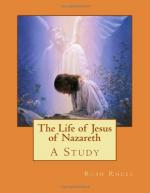43. This fact helps to explain another perplexity in our gospel narratives. A comparison of the two accounts of the cure of the centurion’s servant reveals differences of detail most perplexing, if we ask for minute agreement in records of the same events. When we see that of two accounts evidently reporting the same incident, one can say that the centurion himself sought Jesus and asked the cure of his servant (Matt. viii. 5, 8), while the other makes him declare himself unworthy to come in person to the Lord (Luke vii. 7), the question arises whether other accounts, similar in the main but differing in detail, should not be identified as independent records of one event. Were there two cleansings of the temple (John ii. 13-22; Mark xi. 15-19), two miraculous draughts of fishes (Luke v. 4-11; John xxi. 5-8), two rejections at Nazareth (Mark vi. 1-6; Luke iv. 16-30), two parables of the Leaven, of the Mustard Seed (Matt. xiii. 31-33; Luke xiii. 18-21), and of the Lost Sheep (Matt, xviii. 12-14; Luke xv. 4-7)? Such similar records are often called doublets, and the question of identity or distinctness can be answered only after a special study of each case. It is important to notice that a given teaching, particularly if it took the form of an illustration, would naturally be used by Jesus on many different occasions. When, on the other hand, we find two accounts of specific doings of Jesus similar in detail it is needful to recognize that definite historic situations do not so often repeat themselves as do occasions for similar or identical teachings.




